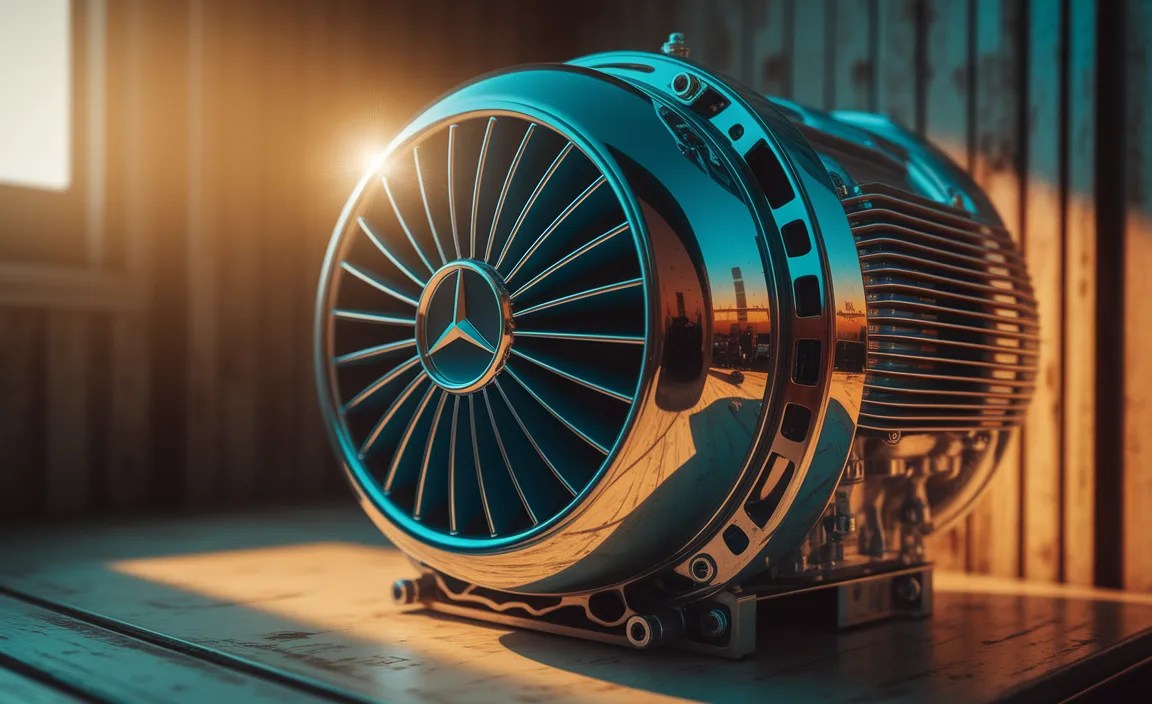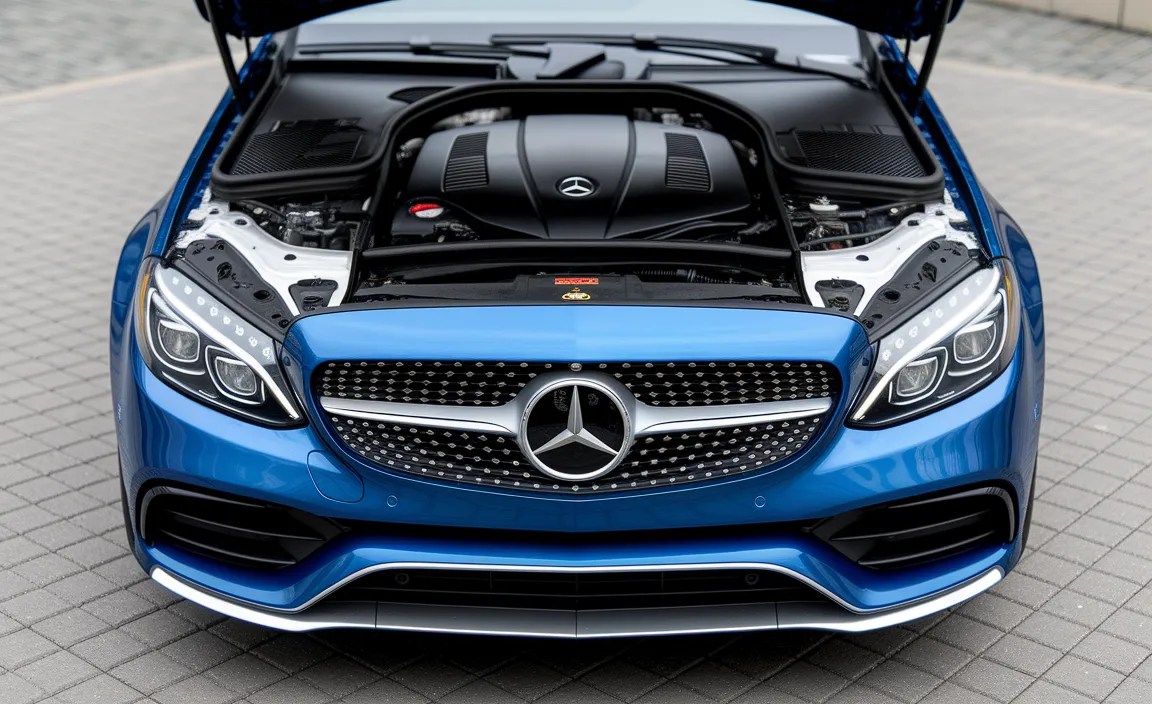Mercedes-Benz C Class Blower Motor: Ultimate Performance
The C-Class blower motor is crucial for your car’s climate control system. If you’re experiencing weak airflow, strange noises, or a complete lack of AC or heat, the blower motor might be the culprit. This guide will walk you through understanding, troubleshooting, and optimizing your C-Class blower motor for ultimate performance.
Your Mercedes-Benz C-Class relies on a sophisticated climate control system to keep you comfortable in any weather. At the heart of this system is the blower motor, often called the HVAC blower motor or fan motor. Its job is simple: to push air through the cabin filters, heater core, and air conditioning evaporator, then distribute it through your dashboard vents.
When this vital component isn’t working correctly, your cabin comfort plummets, turning a luxurious drive into a frustrating experience. This article will demystify the C-Class blower motor, helping you understand its function, common issues, and how to ensure it performs at its best. We’ll cover everything from diagnosing problems to understanding replacement options, so you can regain that perfect cabin temperature.

What is a C-Class Blower Motor and Why is it Important?
The blower motor in your C-Class is essentially a small electric fan driven by a powerful motor. Located behind the dashboard, typically near the glove box or passenger side, it’s responsible for drawing outside air or recirculating cabin air, pushing it through the various components of your climate control system, and then directing it into the passenger compartment via the vents.

Without a properly functioning blower motor, your car’s heating, ventilation, and air conditioning (HVAC) system would be rendered useless. You wouldn’t feel warm air in winter, cool air in summer, or even just fresh air when you need it.
Understanding How Your C-Class Blower Motor Works
Mercedes-Benz vehicles, including the C-Class, often employ advanced climate control systems. The blower motor itself is typically a DC electric motor, designed for variable speeds. This variability is controlled by a blower motor resistor or, in more modern systems, a blower motor control module (often integrated).
When you adjust the fan speed on your climate control panel, you’re signaling either the resistor or the module to alter the voltage supplied to the blower motor, thereby changing its speed. Higher voltage means faster fan speed and more airflow, while lower voltage slows the motor down.
The airflow path is critical: outside air or cabin air is drawn through the cabin air filter (essential for air quality) and then into either the heater core (if heating is on) or the A/C evaporator (if cooling is on). The blower motor then forces this conditioned air through a system of ductwork to reach your selected vents.
Common C-Class Blower Motor Problems and Symptoms
Recognizing the symptoms of a failing blower motor is the first step toward a solution. These issues can range from minor annoyances to complete climate control failure.

Key Symptoms to Watch For
No Airflow from Vents: This is the most obvious sign. If you turn on your fan and get absolutely no air, the blower motor has likely failed completely.</li>
Weak Airflow Only on High Settings: If you only get air when the fan speed is set to maximum, it often indicates a failing blower motor resistor. The resistor has different wattage levels for each speed; a faulty resistor may only allow full power to pass.</li>
Intermittent Airflow: The fan might work sometimes and not others, or it might cut out unexpectedly. This can be due to loose wiring, a motor overheating, or a failing control module.
Strange Noises: Grinding, whining, or clicking sounds coming from behind the dashboard when the fan is on can indicate that the blower motor’s bearings are worn out or that something is caught in the fan impeller.
Burning Smell: In some cases, an overheating blower motor or its electrical components can produce a burning odor. This is a serious sign that needs immediate attention.
Fan Speed Issues: Different fan speed settings may not work, or they might deliver the same amount of airflow regardless of the setting. This often points to the blower motor resistor or control module.
Diagnosing Your C-Class Blower Motor
Before you assume the worst, a few simple checks can help pinpoint the problem. Proper diagnosis saves time and money.
roubleshooting Steps
Check Fuses: The blower motor is protected by a fuse. Consult your C-Class owner’s manual to locate the fuse box (there might be more than one) and the specific fuse for the blower motor. Visually inspect the fuse for a broken filament. If damaged, replace it with a fuse of the exact same amperage rating. A blown fuse could indicate a short circuit or an overloaded motor.
Inspect Cabin Air Filter: Believe it or not, a severely clogged cabin air filter can restrict airflow so much that it mimics a blower motor problem. This is a very common issue and an easy fix. Replacing your cabin air filter regularly is crucial for both air quality and system performance. You can find instructions on how to access and replace your C-Class cabin air filter in most owner’s manuals or online tutorials.
Test Blower Motor Resistor/Control Module: If you have airflow only on certain settings (or only on high), the resistor or control module is a likely suspect. These components regulate the voltage to the blower motor. A common failure point is the “hot spots” on the resistor that can burn out. Determining if it’s the resistor or the module can sometimes require diagnostic tools or testing resistance with a multimeter, which can be complex for beginners. <a href=”https://www.continental-automotive.com/en-us/passenger-cars/components/powertrain/thermo-battery-and-ecm” target=”_blank”>Learn more about automotive electronic control modules to understand their function generally.
Listen for the Motor: With the engine running and climate control on, try to pinpoint the location of the blower motor. Can you hear it trying to operate, perhaps with a faint hum or whirring sound behind the dash? If you hear it but no air moves significantly, the impeller might be detached from the motor shaft, or something might be blocking the fan blades.
Direct Power Test (Advanced): If you’re comfortable with basic electrical work and have found the blower motor’s power connector, you can carefully attempt to apply a known good 12V source directly to the motor’s terminals. If the motor spins, the issue lies in the electrical supply (fuse, relay, wiring, resistor, or module). If it doesn’t spin, the motor itself is likely dead.
The C-Class Blower Motor: Replacement Guide
Replacing a C-Class blower motor can be a DIY project for those with some automotive experience, but it often requires removing other components to access it. The location can vary slightly by C-Class model year and specific trim level.

Tools and Parts You’ll Likely Need
New C-Class Blower Motor (ensure it’s compatible with your specific C-Class model and year) New Blower Motor Resistor or Control Module (often recommended to replace at the same time, especially if it was the suspected fault)
Assorted Screwdrivers (Phillips, Torx)
Socket Wrench Set (with various socket sizes, including extensions)
Trim Removal Tools
Work Gloves
Safety Glasses
Flashlight or Work Light
Possibly a panel clip removal tool
General Replacement Steps (May Vary)
Disclaimer: This is a general guide. Always refer to a service manual specific to your Mercedes-Benz C-Class model for precise instructions and safety precautions. Disconnecting the battery is a crucial safety step for any electrical work.
Disconnect the Battery: For safety, disconnect the negative battery terminal before starting any work.
Access the Blower Motor: This is often the most challenging part. In many C-Class models, the blower motor assembly is located behind the dashboard on the passenger side, accessible through the footwell or by removing the glove box and associated trim panels. You may need to remove plastic trim pieces, the glove box, and potentially a support bracket. Use trim removal tools to avoid damaging the interior.</li>
Locate and Disconnect Wiring: Once you’ve found the blower motor assembly, disconnect the electrical connector. There might be a locking tab you need to press.
Remove Mounting Fasteners: The blower motor is typically held in place by several screws or bolts. Carefully remove these fasteners. Keep track of which fastener goes where, as they can sometimes be different lengths.
Remove the Old Blower Motor: Gently pull the old blower motor out of its housing. Be prepared for it to be a tight fit. Sometimes, you might need to twist it slightly. Inspect the area for debris that may have caused the failure.
Install the New Blower Motor: Insert the new blower motor into the housing, aligning it correctly. Secure it with the mounting fasteners you removed earlier.
Reconnect Wiring: Plug the electrical connector back into the new blower motor, ensuring it clicks into place.
Reassemble Interior Components: Reinstall the glove box, trim panels, and any other parts you removed in the correct order.
Reconnect Battery: Reconnect the negative battery terminal.
Test Operation: Start the engine and test all fan speed settings and climate control functions to ensure everything is working correctly. Listen for any unusual noises.
C-Class Blower Motor Performance: Upgrades and Considerations
While the primary goal is usually to restore original function, some enthusiasts might consider performance enhancements. However, for a blower motor, “performance” often translates to reliability, efficiency, and proper fitment rather than raw speed increases not designed for the system.

Quality Replacement Parts
For most C-Class owners, opting for high-quality Original Equipment Manufacturer (OEM) or reputable aftermarket parts is the best way to ensure “ultimate performance” in terms of longevity and proper operation. Cheap, unbranded parts might fail prematurely or not perform to the specifications your C-Class climate control module expects.
Efficient Operation
Modern Mercedes-Benz vehicles are designed with efficiency in mind. The blower motor and its control system are optimized to draw a specific amount of power. Replacing with an equivalent, high-quality part ensures you maintain that intended efficiency, preventing unnecessary strain on your vehicle’s electrical system.
Heated/Cooled Seat Integration
While not directly part of the blower motor’s job, a robust and properly functioning HVAC system, including the blower motor, is essential for the overall comfort experience that defines a Mercedes-Benz. This includes the efficiency of heated and cooled seats, which are part of the broader cabin climate control ecosystem.
Factors Affecting Blower Motor Lifespan
Several factors can influence how long your C-Class blower motor lasts. Understanding these can help you prolong its life.

Environmental Conditions
Extreme temperatures, high humidity, and dusty environments can put extra strain on the blower motor and its electrical components. Keeping your vehicle clean and well-maintained can help.
Electrical System Health
A healthy electrical system, including a reliable battery and alternator, ensures the blower motor receives consistent voltage. Fluctuations can lead to premature wear.
Cabin Air Filter Maintenance
As mentioned, a dirty cabin air filter forces the blower motor to work harder to pull air through. Regular replacement (typically every 10,000-15,000 miles or once a year) is critical. Check your owner’s manual for the exact interval for your C-Class.
Debris Ingress
When vehicle bodies and ventilation systems age, small debris like leaves, twigs, or even small rodents can find their way into the air intake and impinge on the blower fan. This not only creates noise but can also damage the fan blades or the motor itself. Keeping the area around your windshield wipers clear and ensuring any intake grilles are intact can help.
When to Call a Professional
While some troubleshooting and replacement tasks can be DIY-friendly, there are times when it’s best to seek professional help.
Complex Diagnostics
If you’ve checked fuses and filters and are still unsure about the cause of the problem, a professional mechanic with specialized Mercedes-Benz diagnostic equipment can accurately identify issues with control modules, wiring harnesses, or other complex systems.
Difficult Access
Some C-Class models have tightly integrated components. If accessing the blower motor requires extensive disassembly of the dashboard or other sensitive interior parts, it might be safer and more efficient to have a qualified technician handle it. Incorrect reassembly can lead to rattles, trim damage, or even compromise safety systems.
Electrical Gremlins
If you suspect an electrical short, wiring issue, or a problem with the climate control module itself.






